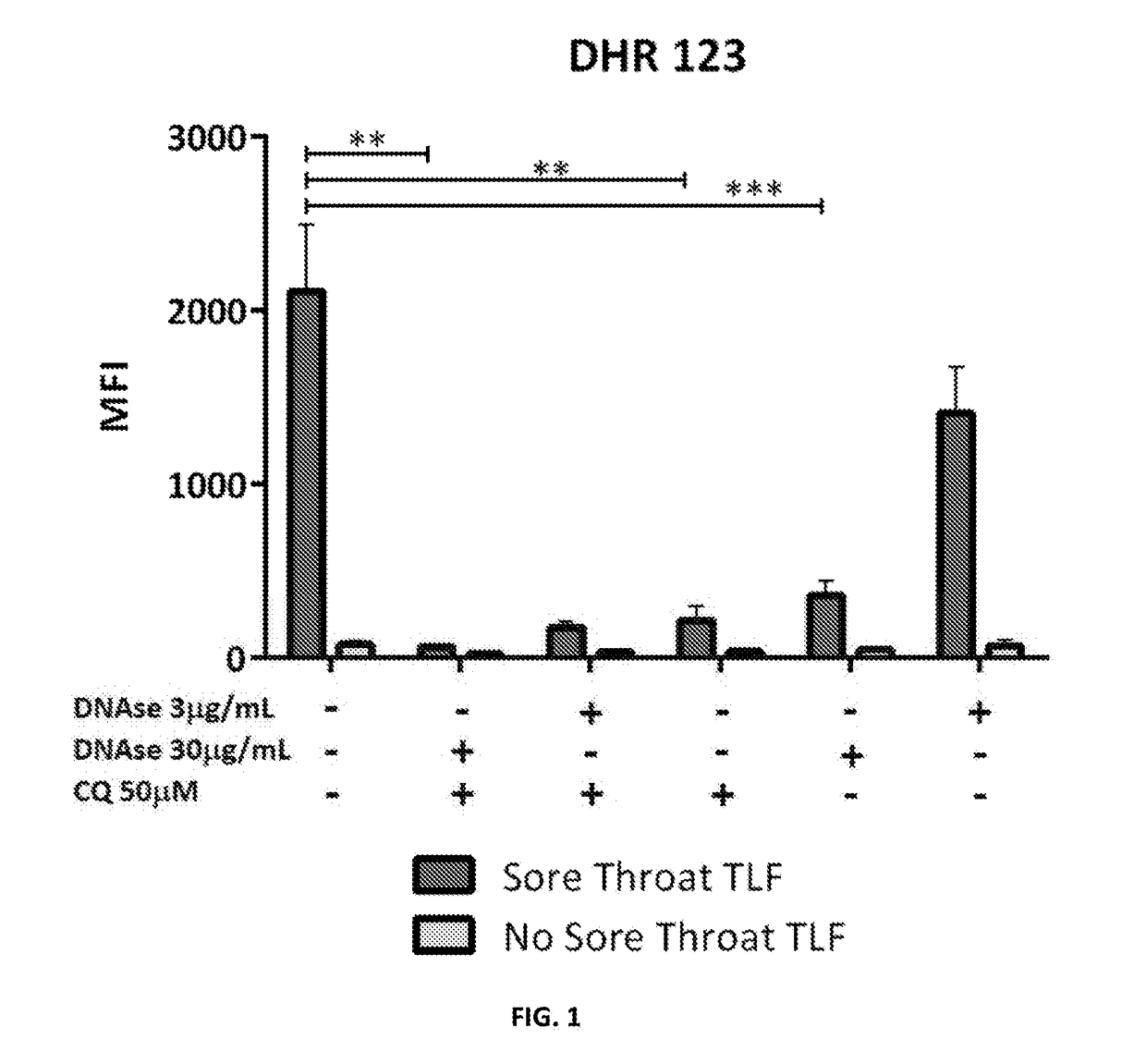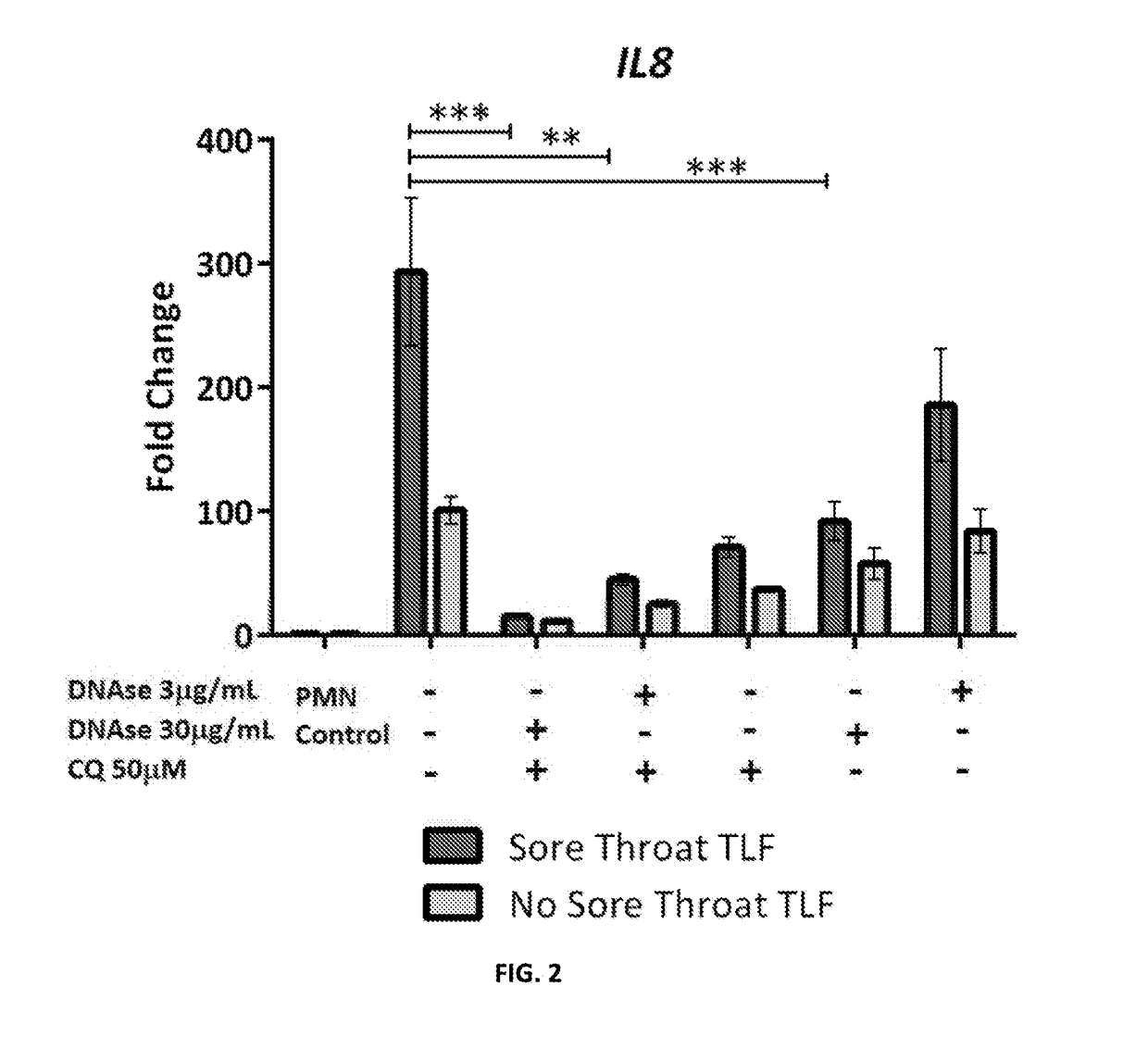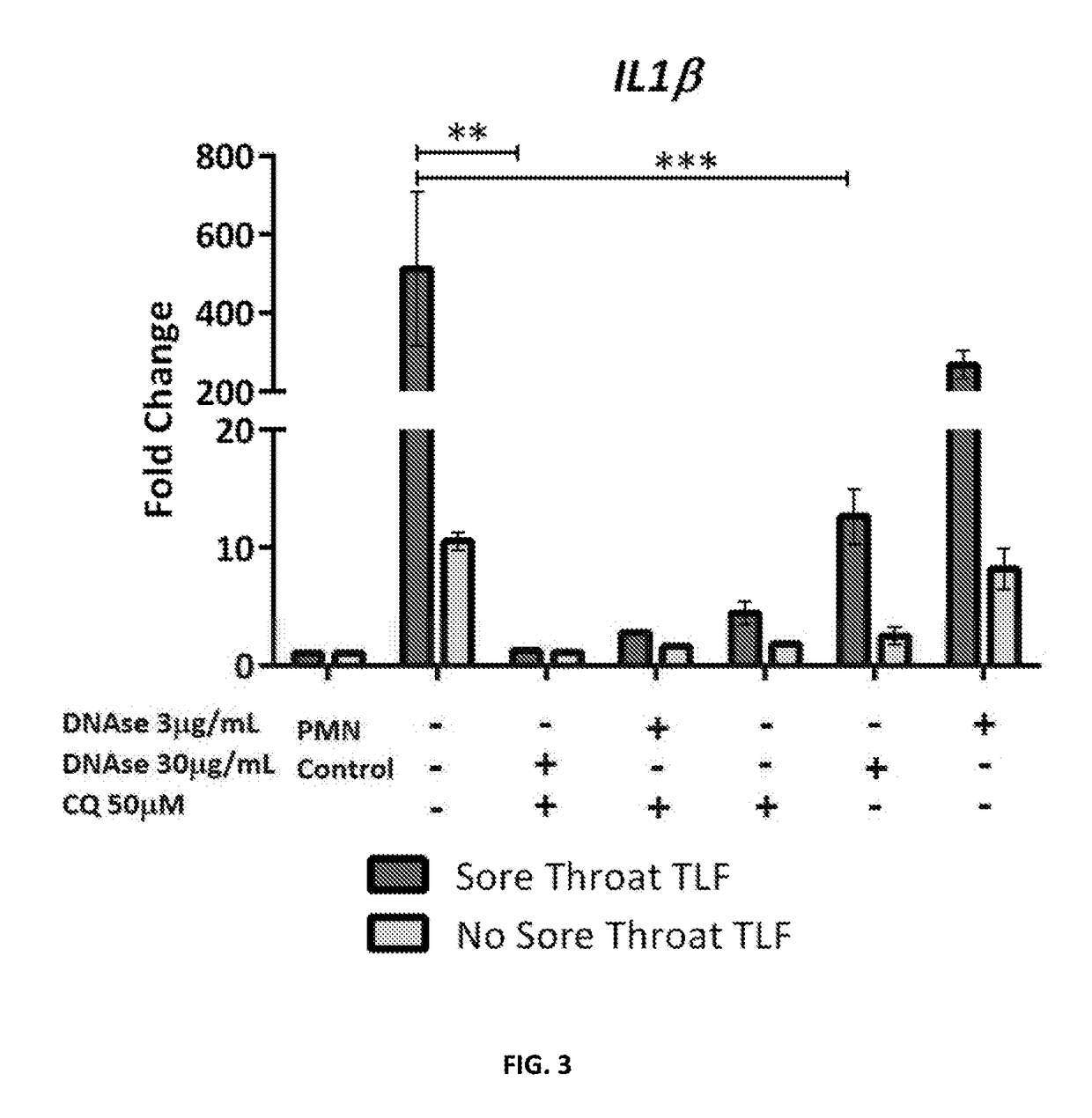Anti-neutrophil activity on innate immune response
a technology of innate immune response and anti-neutrophil, which is applied in the field of foreign object use-induced injury amelioration, can solve the problems of local or systemic inflammatory response, delay patient recovery after surgery, and remain unclear, and achieve the effect of reducing neutrophil-mediated inflammation and neutrophil-mediated inflammation
- Summary
- Abstract
- Description
- Claims
- Application Information
AI Technical Summary
Benefits of technology
Problems solved by technology
Method used
Image
Examples
example 1
[0110]In this Example, presence of innate immune activators in the tracheal lavages of healthy human volunteers was determined to demonstrate a source of sterile injury.
[0111]Specifically, the presence of mitochondrial DNA (mtDNA) in the tracheal lavages of healthy human volunteers with clinical evidence of injury indicated by presence of sore throat was measured. Elevation of mtDNA was significant in the sore throat patients, when compared to those without injury as shown by PCR analysis. Furthermore, bacteriologic cultures showed normal tracheal flora and qPCR 16S RNA analysis indicated minimal bacteria presence in all positive and negative specimens.
[0112]Neutrophil cell response to mtDNA using Toll-Like Receptor-9 (TLR-9) activity and ROS production in neutrophils as indicators of activation was analyzed. Cocultures in vitro of human tracheal lavage samples from patients with sore throat and no sore throat with isolated neutrophils obtained from healthy blood donors reproduced n...
example 2
[0117]In this Example, the effects ex vivo of a single dose DNase I and chloroquine on neutrophil activation was determined.
[0118]After approval by the IRB at Washington University St. Louis School of Medicine, consent from healthy humans admitted for short-stay surgery was obtained. Supernatants of tracheal lavages of sore throat and no sore throat subjects were co-cultured with PMN of healthy volunteers. Neutrophils were identified by flow cytometry using monoclonal antibody (mAb) CD66b / CD16. The ROS probe (DHR123) was used for assessment of ROS activity. IL-1β, TNF-α and IL-8 were measured by qPCR. Analysis was conducted in 18 subjects (6 with sore throat, 6 without sore throat and 6 controls). Each specimen was exposed to different concentrations of DNase I (3-30 μg / ml) and chloroquine 50 μM. MANOVA was utilized for statistical analysis with *p<0.05 considered statistically significant.
[0119]Compared to the no sore throat group, the sore throat group showed higher DHR-123 activi...
example 3
[0120]In this Example, the presence of sterile products such as damage associated molecular patterns (DAMPs) and in particular mitochondrial DNA (mtDNA) induction of local neutrophil activation was determined.
[0121]After approval by the IRB at Washington University St. Louis, consent was obtained from healthy humans. Supernatants of tracheal lavages of sore throat (n=6) and no sore throat (n=6) were analyzed for mtDNA. Cocultures of healthy donor neutrophils with tracheal lavage fluids (TLFs) of sore throat and uninjured subjects were analyzed for ROS (DHR-123), TLR-9 and human neutrophil elastase (ELANE). Flow cytometry was used to identify PMN with mAb CD66b / CD16PMN, and ROS activity, whereas qPCR was used for mtDNA, TLR-9 and ELANE identification. Each specimen was exposed to different concentrations of N-Acetylcysteine (NAC) (3-10 mM) and chloroquine (CQ) 50 μM. MANOVA was utilized for statistical analysis with *p<0.05; considered statistically significant.
[0122]Elevated mtDNA l...
PUM
| Property | Measurement | Unit |
|---|---|---|
| time | aaaaa | aaaaa |
| time | aaaaa | aaaaa |
| time | aaaaa | aaaaa |
Abstract
Description
Claims
Application Information
 Login to View More
Login to View More - R&D
- Intellectual Property
- Life Sciences
- Materials
- Tech Scout
- Unparalleled Data Quality
- Higher Quality Content
- 60% Fewer Hallucinations
Browse by: Latest US Patents, China's latest patents, Technical Efficacy Thesaurus, Application Domain, Technology Topic, Popular Technical Reports.
© 2025 PatSnap. All rights reserved.Legal|Privacy policy|Modern Slavery Act Transparency Statement|Sitemap|About US| Contact US: help@patsnap.com



